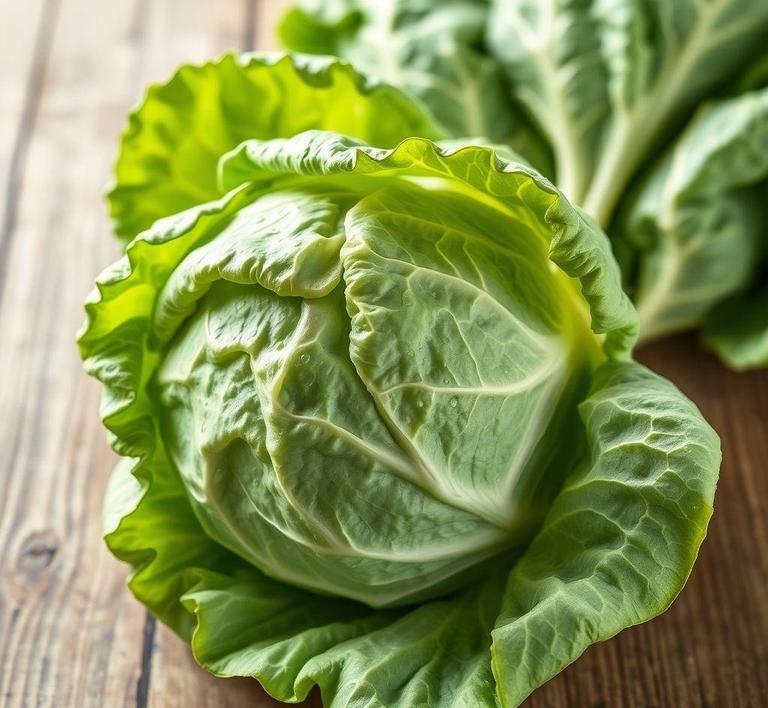If you’ve ever found yourself with a batch of sour cabbage that you just couldn’t finish and thought, “Can I refreeze this”? – you’re in the right place! Refreezing sour cabbage is totally possible, but it’s important to know the right techniques to keep it tasting fresh and flavorful. Whether you’ve made too much sauerkraut or simply had leftovers after a hearty meal, this guide will walk you through the best ways to store and refreeze your sour cabbage without losing its unique tang. Let’s dive into the best methods for keeping your cabbage in top shape, so you can enjoy it later without any funky texture or flavor surprises!
Can You Refreeze Sour Cabbage?

The short answer is yes-you can refreeze sour cabbage, but with important caveats. Sour cabbage, often referred to in its leaf form as "sauerkraut leaves" or whole fermented cabbage heads, is a lacto-fermented food made by curing cabbage in a brine solution. During this fermentation process, beneficial bacteria (mainly lactic acid bacteria) proliferate, giving the cabbage its distinctive sour taste and long shelf life. Freezing is a common method to extend this longevity even further, especially when preparing cabbage rolls or other traditional dishes in bulk.
However, refreezing any food is not a decision to be taken lightly. Once sour cabbage has been thawed, its texture, microbial activity, and moisture content can change significantly. If the cabbage was thawed properly-preferably in the refrigerator and not left at room temperature for extended periods-it remains relatively safe to refreeze. But safety does not equate to quality. So while it is technically safe to refreeze sour cabbage, it’s important to be aware of the methods and outcomes involved.
How To Refreeze Sour Cabbage?
If you’ve thawed sour cabbage and find yourself with leftovers or unused portions, follow these steps to refreeze it safely and effectively:
-
Assess the Cabbage:
Check for any signs of spoilage. Sour cabbage should have a pleasantly tangy smell, a slightly crunchy texture, and no signs of mold or off odors. If anything seems off, it’s best to discard it rather than risk refreezing contaminated food.
-
Drain Excess Liquid:
After thawing, sour cabbage often releases additional brine or water. This moisture can form ice crystals when refrozen, which may damage the cabbage’s cellular structure further. Patting the cabbage dry or draining the liquid before refreezing can help preserve texture.
-
Portion Appropriately:
Consider dividing the cabbage into smaller, single-use portions. This way, you avoid the need to thaw and refreeze again, which would lead to more significant quality loss.
-
Use Airtight Packaging:
Place the cabbage in airtight freezer bags or containers. Squeeze out as much air as possible to prevent freezer burn. Vacuum-sealing is an excellent method if you have the equipment.
-
Label and Date:
Clearly label the container with the date of refreezing. Generally, it’s best to use refrozen cabbage within 1 to 2 months for optimal flavor and texture.
-
Freeze Quickly:
Place the cabbage in the coldest part of your freezer. The faster it freezes, the smaller the ice crystals, which helps minimize cellular damage.
Quality Impact
While refreezing sour cabbage is feasible, repeated freezing and thawing cycles will inevitably affect its sensory attributes. The most noticeable changes occur in the following areas:
-
Texture:
This is the most affected quality. The already softened cabbage from fermentation becomes even more limp and mushy after thawing and refreezing. The crunchy snap that makes fresh or initially frozen sour cabbage appealing diminishes considerably.
-
Flavor:
Though the tangy, lactic-acid flavor usually remains intact, extended freezing and thawing can lead to a slight dilution or flattening of taste. In some cases, the sourness may become more pronounced, almost unpleasantly so, especially if the cabbage continued to ferment slightly at warmer temperatures during thawing.
-
Aroma:
The fermented aroma can become stronger or more pungent, particularly if the cabbage was exposed to air or not sealed properly. This is due to the ongoing enzymatic activity and bacterial presence, which may continue working slowly even at low temperatures.
-
Nutrient Content:
Vitamin C, a key component of fermented cabbage, is sensitive to temperature changes and oxidation. Repeated thawing and freezing can degrade this vitamin further, slightly reducing the nutritional value of the cabbage.
Refreezing sour cabbage is a viable option under the right conditions, especially if food safety practices are rigorously followed. However, the trade-offs in texture, taste, and overall quality are worth considering. If you find yourself needing to refreeze sour cabbage, ensure it has been handled properly-thawed in the refrigerator, kept out of the temperature danger zone, and stored in airtight conditions. While the flavor may hold, the crisp bite of freshly fermented cabbage will not. For dishes where texture is less critical-like cooked cabbage rolls or stews-refrozen sour cabbage can still serve its purpose well. But if you aim for that classic crunch and bright, fresh acidity, it’s best to use sour cabbage in its original or first-thawed form. When in doubt, portion wisely during the initial freeze to eliminate the need for refreezing altogether.
Is It Safe To Refreeze Sour Cabbage?
Refreezing sour cabbage-whether it’s homemade sauerkraut or a store-bought fermented variety-is a matter of balancing food safety with preserving its quality. Technically, yes, it is safe to refreeze sour cabbage, but only under certain conditions.
The primary concern is whether the cabbage remained at a safe temperature (below 40°F or 4°C) while thawed. If it was thawed in the refrigerator and not left out for more than 2 hours at room temperature, it can be safely refrozen. This is because low temperatures inhibit the growth of harmful bacteria. However, every freeze-thaw cycle slightly degrades the cabbage’s texture and tangy flavor due to the breakdown of cell walls and fermentation compounds.
Keep in mind that fermented foods like sour cabbage are microbiologically active. Each time they are exposed to temperature fluctuations, the living probiotics-lactic acid bacteria-can be compromised. While this doesn’t necessarily make the cabbage unsafe, it can reduce its probiotic benefits and alter the characteristic sour profile that defines it.
Signs That Sour Cabbage Should Not Be Refrozen
Before returning your sour cabbage to the freezer, perform a thorough sensory check. Fermented foods naturally carry a pungent aroma and tangy taste, but certain signs are red flags:
-
Off or Rotten Odor:
If the cabbage smells putrid, yeasty in a bad way, or sulfuric beyond its normal fermented tang, it’s likely contaminated. Spoilage bacteria or mold may have taken over.
-
Slimy Texture:
A slight softness is normal, but a thick, mucilaginous slime indicates bacterial spoilage. This should not be refrozen or consumed.
-
Discoloration or Mold:
Brown, black, blue, or pink discolorations are warning signs. Mold can grow if the brine level drops during thawing or if the cabbage was exposed to air for too long.
-
Bubbling or Foaming After Thaw:
While slight fizz is typical of active fermentation, excessive bubbling after thawing-especially if it wasn’t present before-might indicate unwanted bacterial activity.
-
Extended Exposure to Warm Temperatures:
If your cabbage sat out for more than 2 hours at room temperature (or 1 hour in temperatures over 90°F/32°C), the risk of foodborne illness significantly increases. Refreezing at that point is not safe.
Common Refreezing Mistakes
-
Refreezing After Room Temperature Thaw:
One of the most critical errors is refreezing sour cabbage that was thawed on the kitchen counter. This invites bacterial contamination and compromises safety.
-
Refreezing Without Brine:
The brine is not just a flavoring agent-it acts as a protective barrier. Freezing sour cabbage without its brine dries it out and makes it vulnerable to freezer burn and spoilage.
-
Using Non-Airtight Containers:
Oxygen exposure during freezing leads to oxidation and freezer burn. If cabbage is loosely sealed or placed in a low-quality container, ice crystals can form, damaging the texture and inviting off-flavors.
-
Repeated Freeze-Thaw Cycles:
Every cycle degrades the structure and integrity of the cabbage. Avoid thawing and refreezing repeatedly. Instead, freeze in smaller, meal-size portions to minimize waste and overhandling.
-
Freezing Already Compromised Cabbage:
If the cabbage was already showing signs of spoilage before freezing, the cold won’t undo the damage-it just presses pause on it. Once thawed, the deterioration resumes, sometimes at an accelerated rate.
Tips And Tricks
To ensure your sour cabbage retains as much flavor, texture, and safety as possible during freezing and refreezing, consider these practical strategies:
-
Portion Control:
Freeze cabbage in small, single-use portions. Silicone ice cube trays or small freezer bags work wonders. This prevents the need to thaw a large batch and risk leftovers going bad.
-
Brine Top-Off:
Always ensure the cabbage is submerged in brine before freezing. If the brine has evaporated or wasn’t included, make a quick brine (1 tbsp salt per cup of water) to add before sealing.
-
Use High-Quality Freezer Containers:
Choose vacuum-sealed bags or thick, freezer-safe containers. Label with dates to monitor freshness and avoid keeping beyond 3-4 months for optimal quality.
-
Slow Thaw in Refrigerator:
When it’s time to use it, let it thaw in the fridge overnight. This maintains the integrity of the cabbage and prevents dangerous temperature zones.
-
Taste-Test Before Refreezing:
If you’re unsure whether a previously thawed cabbage is worth freezing again, taste a small amount. If it tastes overly bitter, foul, or unpleasant, discard it rather than risk your health.
Conclusion
Sour cabbage is a culinary gem-nutritious, probiotic-rich, and full of deep, complex flavor. While it can be safely refrozen under the right conditions, doing so requires caution and care. The key is to be attentive to spoilage signs, avoid common refreezing mistakes, and take practical steps to preserve both the safety and quality of the cabbage.
By freezing in small batches, keeping the brine intact, and handling your fermented foods with clean, cold hands (and tools), you can enjoy delicious sour cabbage with minimal waste and maximum flavor. Just remember-when in doubt, throw it out. No taste is worth a foodborne illness.


